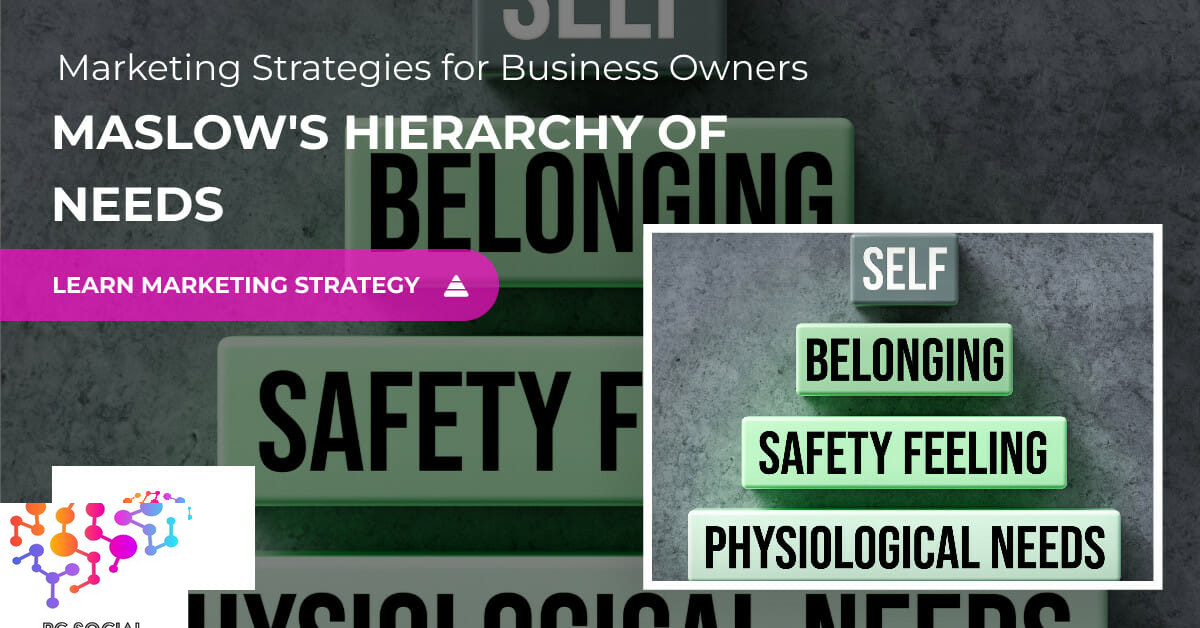Maslow’s Hierarchy of Needs is a psychological theory developed by Abraham Maslow in the 1940s. Maslow proposed that human motivation and needs can be divided into categories arranged in order of importance. Basic physiological needs such as food, water, warmth, and rest are at the base level of the hierarchy. At the next level are safety needs like security and stability. Following those are social conditions such as belongingness and acceptance. Further up the pyramid are esteem needs, including recognition and accomplishment. At the top level are self-actualization needs such as growth, creativity, morality, problem-solving, etc.
Small business owners can use Maslow’s hierarchy of needs to enhance their marketing strategies. By understanding the types of markets important to their customers, they can create products and services that meet those needs. For example, if a small business offers a product or service related to safety, it can emphasize how it provides security and stability in its marketing materials. If the product or service is related to esteem, the business can focus on how it gives recognition and accomplishment. Understanding the deeper motivations behind consumer behavior can help small business owners develop more effective marketing campaigns.
Understanding Motivational Drivers
Understanding the underlying motivation behind human behavior is essential for successful marketing efforts. By accounting for the different levels of stimulation that influence consumer decision-making, small business owners can tailor their marketing strategies to target the needs of potential customers.
Maslow’s Hierarchy of Needs provides a useful framework for understanding the motivation behind consumer behavior. Basic physiological needs such as food, water, warmth, and rest must be met at the base level before higher-level needs can be addressed. Once those needs are satisfied, people prioritize safety needs like security and stability. Next, they will focus on social needs such as belongingness and acceptance; then comes esteem needs, including recognition and accomplishment. Finally, at the top level is self-actualization which involves growth, creativity, morality, problem-solving, etc. Small business owners can use this hierarchy to understand what needs are driving customer behavior.
Small business owners can craft more effective marketing strategies by taking the time to understand the different motivational drivers that influence consumer decision-making. This includes understanding what level of Maslow’s hierarchy their products or services meet and creating messaging that appeals to those needs. For example, if a small business offers financial services like stock market investing, it could emphasize how it provides stability and security in its marketing materials. Alternatively, if they offer career coaching services, they could highlight how it helps people achieve recognition and accomplishment. Understanding these deeper motivations behind consumer behavior can help small business owners create more successful marketing campaigns.
Accounting for Higher-Level Needs in Marketing Efforts
Accounting for higher-level needs in marketing strategies is crucial. Small business owners can create more successful campaigns by focusing on self-actualization and esteem needs.
Self-actualization involves growth, creativity, morality, problem-solving, etc. Small business owners can emphasize how their products or services meet these needs in their marketing materials. For example, if a small business offers career coaching services, it could highlight how it helps people achieve personal growth and development. Alternatively, if they offer financial services like stock market investing, they could emphasize how it provides an opportunity for creative problem-solving. E esteem needs include recognition and accomplishment. Small business owners can focus on these needs in their marketing efforts by emphasizing how using their products or services can help people gain the respect of their peers and feel accomplished. For example, if a small business offers career coaching services, it could highlight how it helps people achieve professional success and recognition. Alternatively, if they offer financial services like stock market investing, they could emphasize how it provides an opportunity for financial success.
In this presentation, we will discuss how Maslow’s Hierarchy of Needs can enhance marketing strategies for small business owners. We will explore how understanding motivational drivers can help businesses effectively target their prospective customers. Additionally, we will discuss how accounting for higher-level needs in marketing efforts can lead to tremendous success.



1 Comment
The Power of Data-Driven Content Marketing: How it Can Transform Your Business -
August 24, 2023[…] gather insights on customer behaviors, preferences, and needs. With this invaluable information, business owners can confidently make strategic decisions regarding their marketing efforts. This enables them to target their message and connect with their potential customers […]